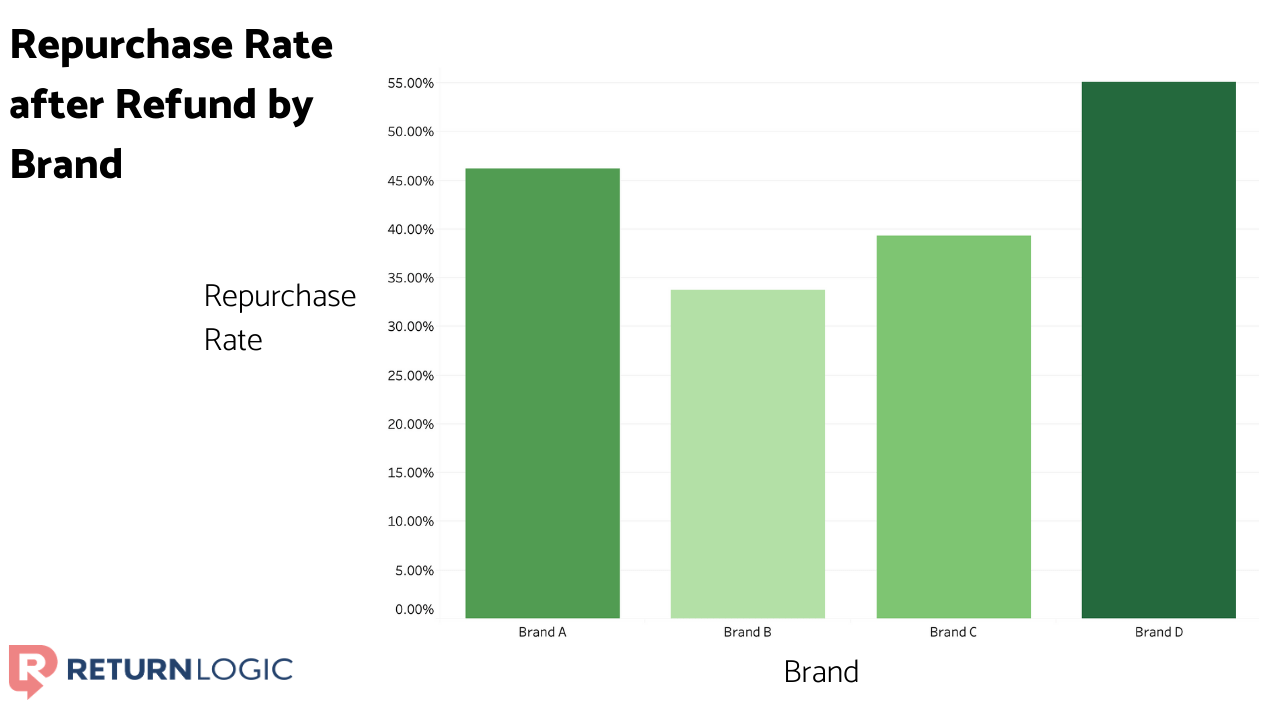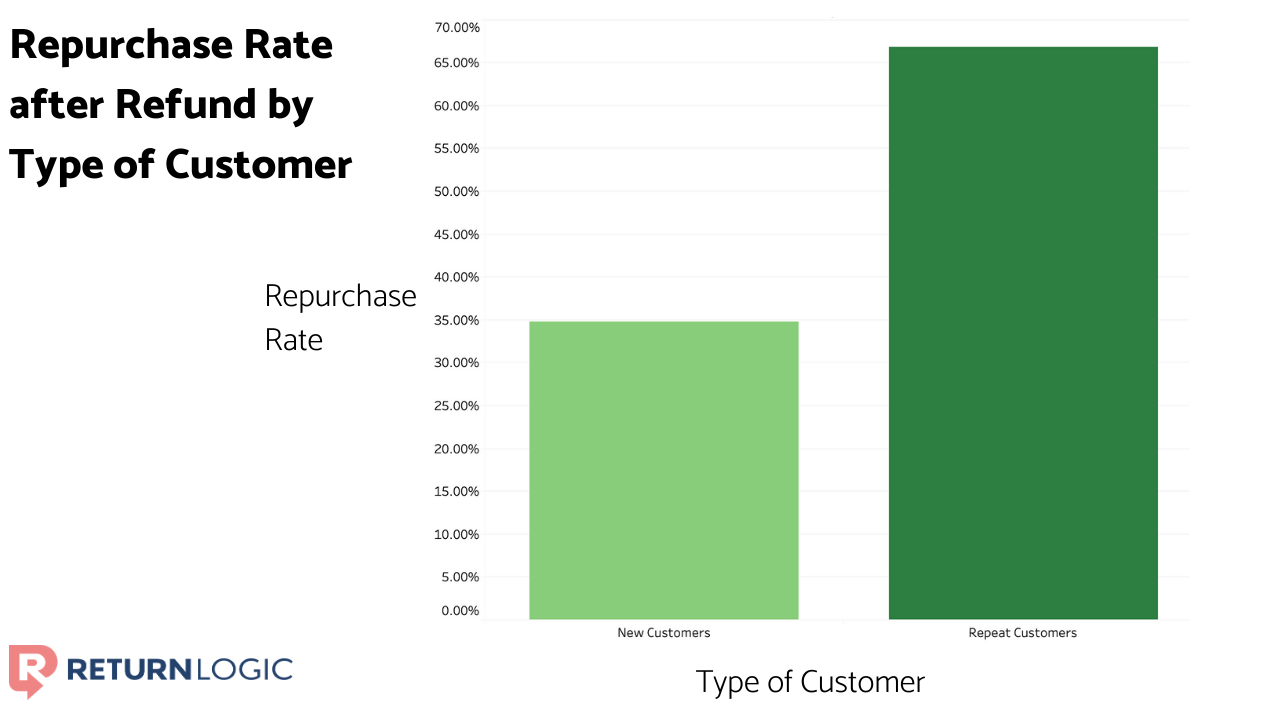Shopify Refund Policy: Do Customers Who Refund Buy Again?

How Does Your Refund Policy Impact Repurchase?
In the scope of ecommerce returns, the same few topics often emerge as top priorities.
How can I enhance the customer’s return experience? How can I reduce my return rate? How can I drive more exchanges?
And these are all valid, thoughtful questions.
But one question is often left out of the discussion, despite its remarkable impact on a brand’s customer lifetime value and potential for future profitability:
Am I retaining customers who make a refund?
Why Does it Matter?
Ecommerce brands fight to acquire new customers.
The digital revolution has empowered diverse and independent businesses to thrive, promising to serve any customer anywhere at any time.
The downside of this immense opportunity is competition – there have never been more brands, retailers, and marketplaces reaching for consumers’ attention.
Simply put, it can be rather difficult and expensive to acquire new customers. And it’s only getting more cumbersome, as customer acquisition costs have steadily risen over the last decade. This is why retaining customers who make a refund is crucial for your business.
Keep in mind that return rates hover between 10% and 30% for ecommerce brands.
A reasonable percentage of your first-time customers will make a return, which many consider the most painful experience in ecommerce.
You’ve built enough trust to earn their purchase. But now they’re not satisfied with the product and have requested a refund.
It’s important to remember the lifetime value of a customer here. Your refund policy can go a long way in giving your customer a positive customer experience during a return.
How Many Refunders Purchase Again?
Well…it depends.
It’s not a very satisfying answer, but it’s the most accurate response. The percentage of customers who repurchase after a refund will vary by brand, return reason, and the type of customer.
To demonstrate this, we will take a look at various ecommerce brands, and how different factors influence their refunder retention.
Brand
Every business’ repurchase rate results from different markets and customer retention strategies.
We can anticipate, then, that each retailer will have a different refund repurchase rate.

Brands also have different retention mechanisms.
These mechanisms encompass not only the marketing technologies and playbooks they implement. They also cover the brand, products, and experiences they create.
All of these factors come together to drive repeat purchases, with or without a refund. In this case, Brand D has the highest repurchase rate following a refund of the retailers shown.
Now, we’ll dig deeper into this brand’s refund repurchase rate.
Type of Customer
In most cases, the more purchases a customer has already made, the more likely they are to make the next purchase.
We’ve seen this in previous research into customer churn.
And the same is true in the case of refunds.

For Brand D, repeat customers have a refund repurchase rate nearly double that of new customers.
Especially in the case of a refund, the more purchases a shopper has already made, the more likely they are to make the next purchase.
Return Reason
Return reasons tell us a lot more than why customers return products. They provide a glimpse into the experience of the customer making the return.
Let’s say I return a shirt because it’s too snug for my taste. I am probably a lot more content than if I returned it because of the style, material, or quality.
Return data confirms this concept. Return reasons can be highly indicative of whether or not the shopper will buy again.

Most of the return reasons for Brand D have pretty comparable refund repurchase rates – except one.
Customers who requested a refund due to quality were less likely to repurchase from the brand than customers who did so for other reasons.
A return isn’t just a return – it’s a glimpse into the customer experience.
How Can I Retain More Refunders?
There are several ways to improve the likelihood that you retain customers who make a refund.
Of course, a great place to start is to improve your return process.
You can do so by removing friction and offering a lenient return policy.
If you want to retain more of your customers who make a refund, you should also focus on your overall retention mechanism. Start with your brand, your products, and the experiences that you create.
To maximize your repeat customer rate, you need the correct flow of post-purchase messaging, nurturing campaigns, and win-back tactics to retain shoppers. Timing and relevancy are key.
In addition to the more generalized retention approach, you should consider new and repeat customers as separate cases with different retention strategies.
As we’ve seen, first-time buyers tend to have a lower repurchase rate, particularly after a refund.
They may warrant enhanced nurturing campaigns or targeted incentive offers to revitalize the customer relationship. It truly is a win-back situation.
Of course, not all returns are the same. Return reasons are highly indicative of the customer’s experience and their likelihood of repurchasing. To retain a customer who made a refund, it is essential to understand why they made the return.
So, if you notice that a particular return reason has a substantially lower repurchase rate than others, identify and address the root cause of those returns.
By reducing these problematic returns, you will improve your refund retention rate.
Your Refund Policy is All About Playing the Long Game: Customer Lifetime Value (CLV)
With high costs to acquire new customers, it has never been more important for ecommerce brands to focus on retention and repurchase patterns.
And since return rates typically fall between 10% and 30%, we can’t forget to accommodate shoppers who make a return – particularly for a refund.
Return data holds crucial information on the customer experience that informs a customer’s future relationship with the brand.
Insights like these can help us transform a return into a returning customer.


